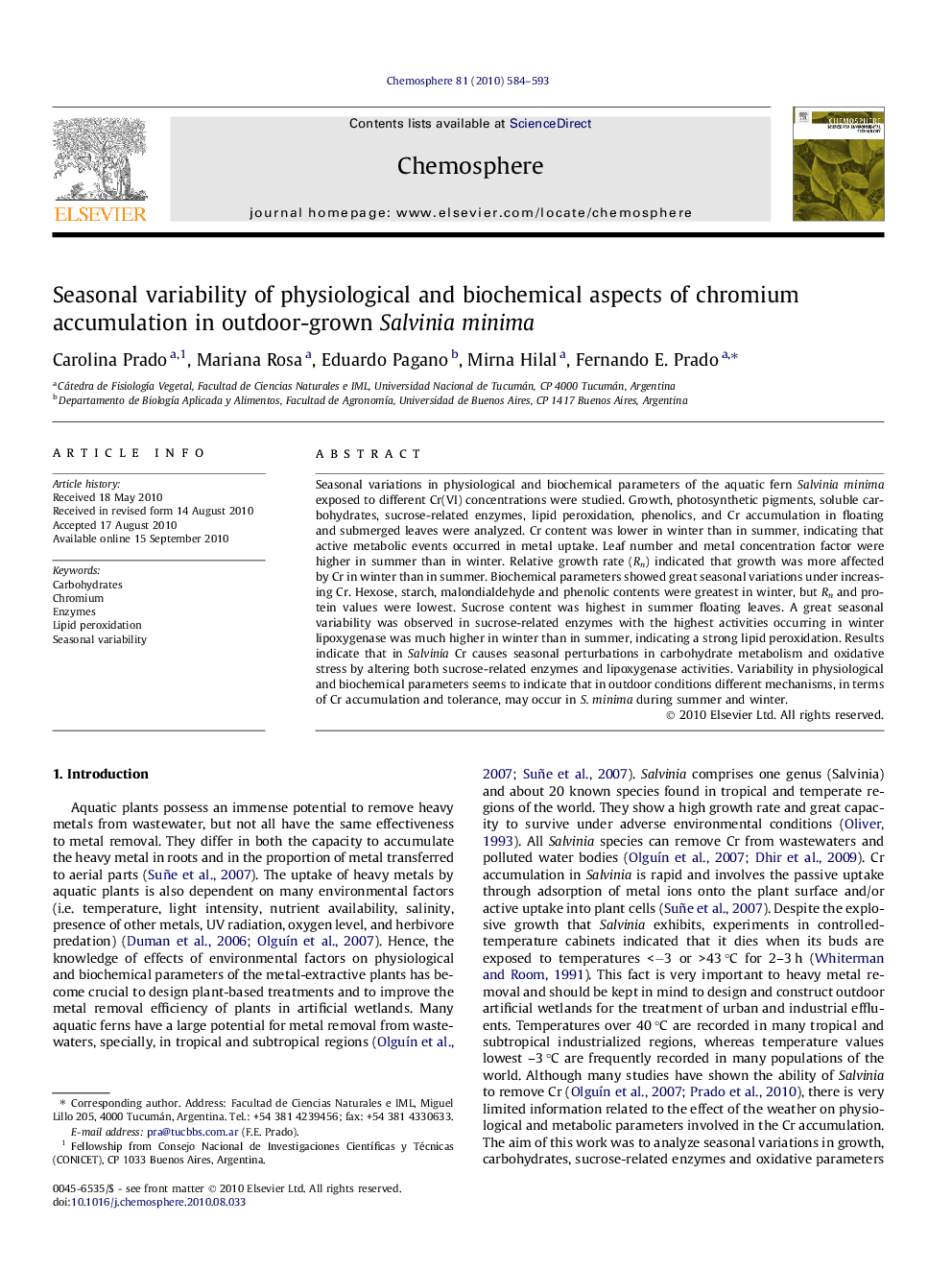| Article ID | Journal | Published Year | Pages | File Type |
|---|---|---|---|---|
| 4411123 | Chemosphere | 2010 | 10 Pages |
Seasonal variations in physiological and biochemical parameters of the aquatic fern Salvinia minima exposed to different Cr(VI) concentrations were studied. Growth, photosynthetic pigments, soluble carbohydrates, sucrose-related enzymes, lipid peroxidation, phenolics, and Cr accumulation in floating and submerged leaves were analyzed. Cr content was lower in winter than in summer, indicating that active metabolic events occurred in metal uptake. Leaf number and metal concentration factor were higher in summer than in winter. Relative growth rate (Rn) indicated that growth was more affected by Cr in winter than in summer. Biochemical parameters showed great seasonal variations under increasing Cr. Hexose, starch, malondialdehyde and phenolic contents were greatest in winter, but Rn and protein values were lowest. Sucrose content was highest in summer floating leaves. A great seasonal variability was observed in sucrose-related enzymes with the highest activities occurring in winter lipoxygenase was much higher in winter than in summer, indicating a strong lipid peroxidation. Results indicate that in Salvinia Cr causes seasonal perturbations in carbohydrate metabolism and oxidative stress by altering both sucrose-related enzymes and lipoxygenase activities. Variability in physiological and biochemical parameters seems to indicate that in outdoor conditions different mechanisms, in terms of Cr accumulation and tolerance, may occur in S. minima during summer and winter.
